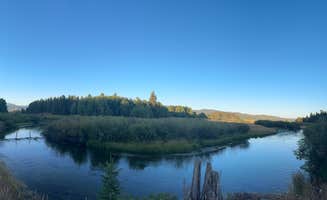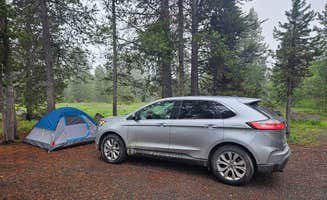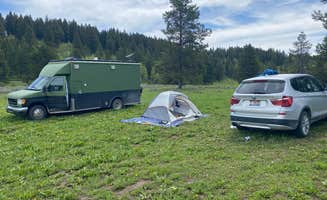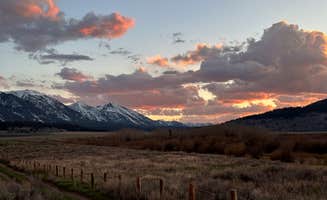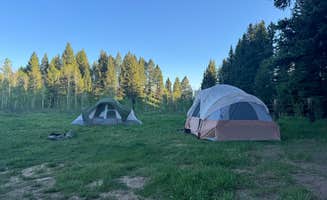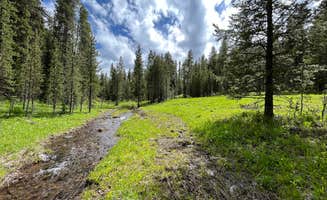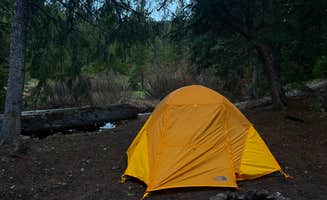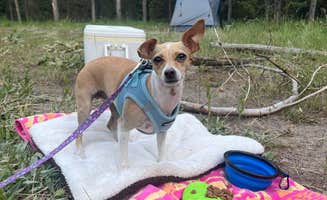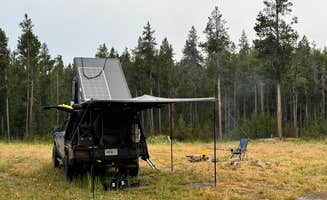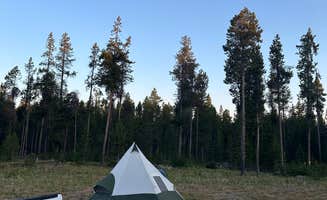Dispersed camping near Island Park, Idaho offers multiple forest service roads where campers can find free sites within a 30-mile radius of town. The area sits at approximately 6,500 feet elevation with summer temperatures averaging 75°F during the day and dropping to 40°F at night. Most primitive camping areas have established fire rings from previous use, though forest regulations still apply.
What to do
Fishing at multiple waterways: Henry's Lake BLM Dispersed area provides excellent fishing access with spots right by the water. According to one camper, "Pulled in just before dark after drive through Yellowstone and Grand Teton. Beautiful level spot right by the boat launch. Didn't even have to unhook. View of the lake and mountains in the back ground" (Henry's Lake BLM).
Hiking trails: The Targhee Creek area offers hiking options with wildlife viewing opportunities. One visitor noted, "Nice 13 mile trail nearby, we saw some wild strawberries!" (Targhee Creek). Most trails start directly from camping areas or within a short drive.
Wildlife viewing: Early morning and evening hours provide the best chances to spot local wildlife. A camper at Targhee Creek mentioned, "We did see come bears and elk from our site which was fun!" Many dispersed sites border wildlife habitats where moose, elk and deer frequently visit.
What campers like
Proximity to Yellowstone: Free camping locations provide affordable alternatives close to the national park. A camper stated, "Free dispersed camping location about 45 minutes from the west entrance of Yellowstone National Park. Open camping area to set up" (Fish Creek Dispersed Camp).
Cell service: Unlike many backcountry locations, several dispersed sites maintain good connectivity. One review for Bootjack noted, "3 bars LTE Verizon. We went more north on bootjack road before going into the wooded area west." This allows for emergency contact and work needs while camping.
Natural water features: Creeks and lakes enhance the camping experience. A camper at Henry Flats Dispersed Spot shared, "Water was close and incredible. No real fire ring but there was a ring from rocks made." Access to water provides both recreation and practical benefits.
What you should know
Seasonal bugs: Depending on timing, insects can impact camping comfort. One camper warned, "We intended to stay for 2-3 nights, but were swarmed with mosquitos and left after the first night. Initially they got in our RV when we were unloading, but then they swarmed our screens and were trying to get in all night."
Road conditions: Many access roads have rough sections requiring careful driving. A visitor to West Fork Denny Creek reported, "Road up isn't bad at all, just potholes. There are maybe 6 actual sites but they are nicely spread out." Some areas become difficult to navigate after rain.
Crowding patterns: Weekends and holiday periods see significantly more campers. One reviewer observed, "Came in on Saturday night and it was fairly crowded, but was still able to find a spot." Arriving mid-week substantially improves site selection chances.
Weather variability: Mountain conditions change rapidly, particularly in spring and fall. A camper shared, "It was VERY windy while we were there. Beautiful views and safe setting for kids and pets." Temperature drops of 30-40 degrees can occur between day and night.
Tips for camping with families
Lakeside sites for recreation: Henry Flats provides safe water access for families. A visitor mentioned, "This is a beautiful spot. A little difficult to find. The road leading down to the lake looks like it's someone's driveway adjacent. I drove by it a few times before actually finding it. Once I got there though definitely worth it."
Established fire rings: Using existing fire rings reduces environmental impact. One camper noted, "There was fire ring already made at the tent site we chose. Few others camping in RVs but plenty of space/privacy between them."
Protected camping areas: Sites with natural windbreaks help with changing weather conditions. "It's a bit of a drive off the beaten path, and you may find yourself thinking 'is it really out here?' but it is. I promise. There are lots of dispersed sites on the way off of the paved road," explained a visitor to Henry's Lake.
Tips from RVers
Level parking areas: West Yellowstone Dispersed offers suitable terrain for larger vehicles. A camper reported, "Large open meadow at 7270 ft. elevation. Very open with several good level areas for RVs or tents." Finding naturally level spots reduces setup time.
Turnaround spaces: Road endings can create difficulties for larger vehicles. One RVer advised, "Snow plow turnaround at the end of Bootjack Dr, so you can get turned around on that road." Scouting locations before bringing in larger rigs prevents difficult backing situations.
Clearance considerations: Some access roads require higher clearance vehicles. A visitor shared, "One of the spots if you drive long enough requires a lifted vehicle and allows for two." Rutted roads become more challenging after rain events, especially for lower vehicles.


